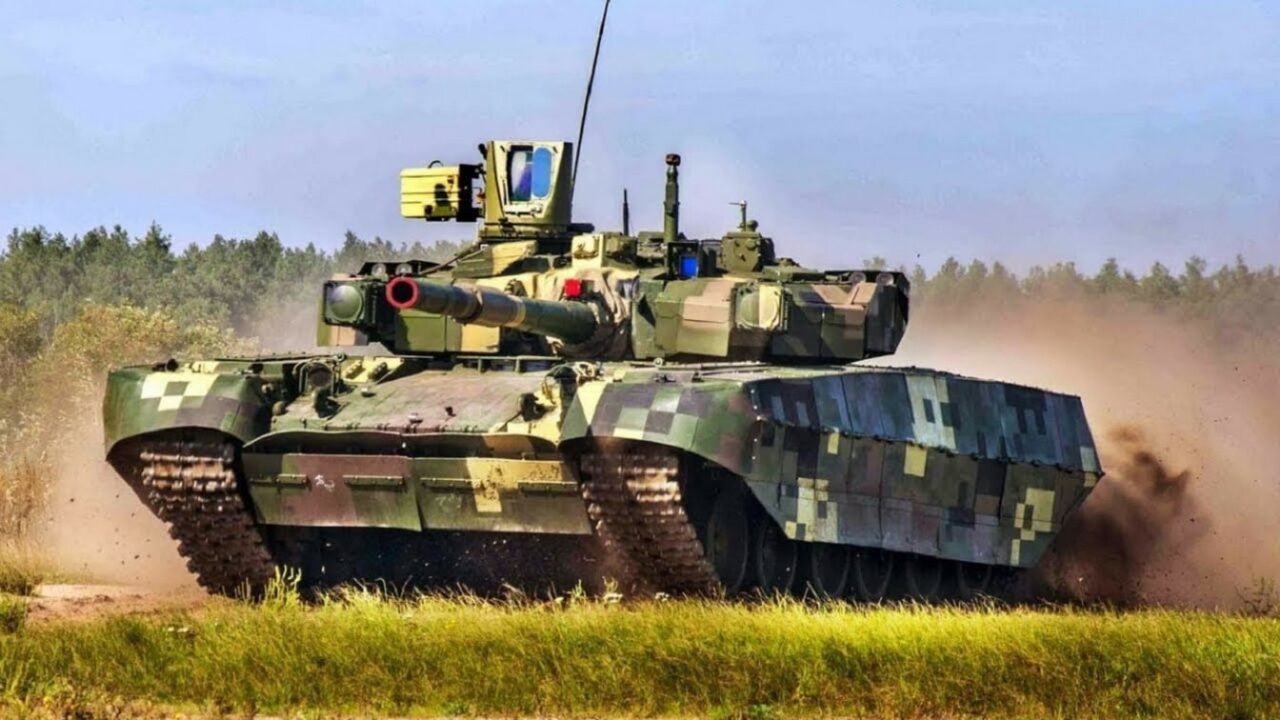New Video Showed the Destruction of Pair of Russian BMP-1s – A video showing the destruction of a number of Russian armored personnel carriers in Ukraine circulated on social media on Thursday.
War in Ukraine on Video: What We Know
A pair of Ukrainian tanks fired at extreme distance and successfully targeted a Russian column that was traveling across open ground.
The footage was shared by Ukraine Weapons Tracker (@UAWeapons), which continues to provide open-source reporting from the front.
The fact that the Russian vehicles were so easily targeted and seemingly destroyed isn’t really much of a surprise; as even after a year of fighting, the Kremlin’s forces continue to employ questionable tactics that include moving in bunched-up formations with little cover.
However, what is actually a bit more confounding is that Russia has been forced to employ significant numbers of its older BMP-1 infantry fighting vehicles (IFVs).
It would be among the older platforms now being employed in the fighting, but more than 20,000 were produced in all variants during the Cold War, and is more readily available than the more modern BMP-2 and BMP-3 IFVs in Russia’s arsenal.
Cold Work Workhorse
The Soviet Union introduced the BMP-1 infantry fighting vehicle in 1966.
It was then a new type of armored personnel carrier (APC) that provided mechanized infantry squads with the firepower to take on tanks and entrenched ground troops.
Western observers first took notice of the vehicle on November 1, 1967, when it appeared in a Soviet military parade. It was considered to be a radical new design for APCs
The primary armament of the BMP-1 is its turret-mounted 73mm (2.87-inch) short-recoil gun, which was fed with fin-stabilized rocket-assisted ammunition from a 40-round magazine.
The weapon was also developed with a low-pressure system to negate excessive backblast into the cabin.
It was designed to be operated by a crew of three while it could carry an additional eight troops.
Though its primary user was the Soviet Union, the BMP-1 was actually first tested in combat in the 1973 Yom Kippur War in Egyptian and Syrian service – but with mixed results.
A number of vehicles were lost due to technical failures, while the crews weren’t likely properly trained to best utilize the vehicle in combat. However, its amphibious capabilities allowed it to successfully cross the Suez Canal, and it had reportedly caught some Israeli tank brigades off guard.
Despite those early successes, the Israeli forces quickly countered the BMP-1 with its 106 mm light recoilless guns. A number of the infantry fighting vehicles were captured and studied by western specialists.
The BMP-1 was later used during the Soviet-Afghan War, where it was employed by motorized rifle and tank units, as well as by some Soviet Special Forces personnel.
It proved unsuited in the mountainous regions of Afghanistan however, while its light armor and armament were inadequate when facing ambushes from Mujahedeen forces.
In addition, a significant number were lost to IEDs and other land mines.
It would seem that the lessons from past conflicts have been forgotten, as Russia now seems to be throwing the Cold War workhorse IFVs without seemingly blatant disregard for potential threats.
The results are destroyed BMP-1s – as well as BMP-2s – and a significant number of dead crews.
#Ukraine: Two Russian BMP-1 infantry fighting vehicles were destroyed by two Ukrainian tanks firing at extremely short range near Vodyane, #Donetsk Oblast. pic.twitter.com/xTthbEIv0K
— ???????? Ukraine Weapons Tracker (@UAWeapons) March 2, 2023
MORE: Watch This – Video Shows Ukraine Destroying One Of Russia’s Best ‘Big Guns’
MORE: Donald Trump Keeps Making One Embarrassing Mistake
MORE: The End For Donald Trump Might Finally Have Arrived
Author Experience and Expertise
A Senior Editor for 19FortyFive, Peter Suciu is a Michigan-based writer. He has contributed to more than four dozen magazines, newspapers, and websites with over 3,200 published pieces over a twenty-year career in journalism. He regularly writes about military hardware, firearms history, cybersecurity, politics, and international affairs. Peter is also a Contributing Writer for Forbes and Clearance Jobs. You can follow him on Twitter: @PeterSuciu.

